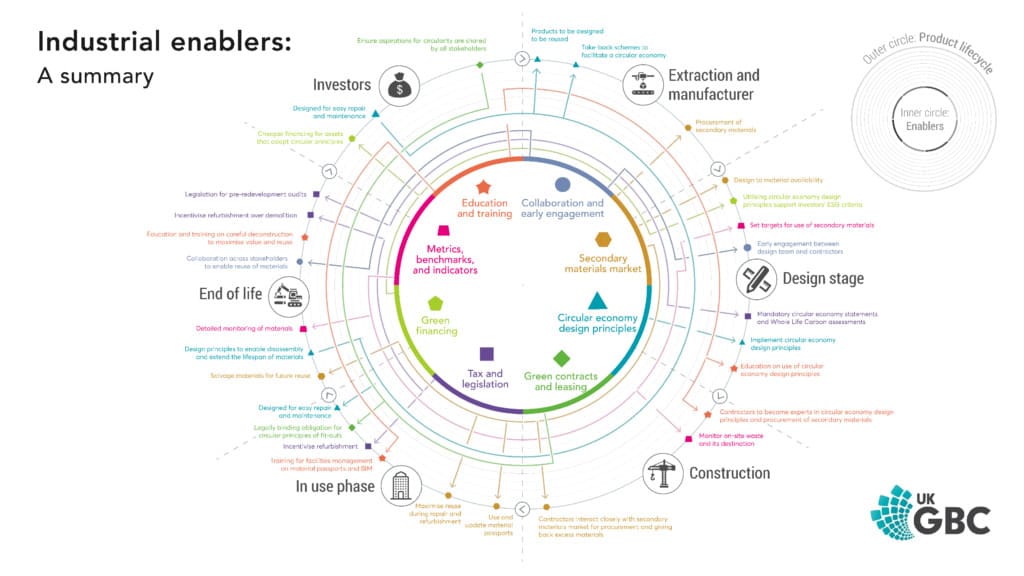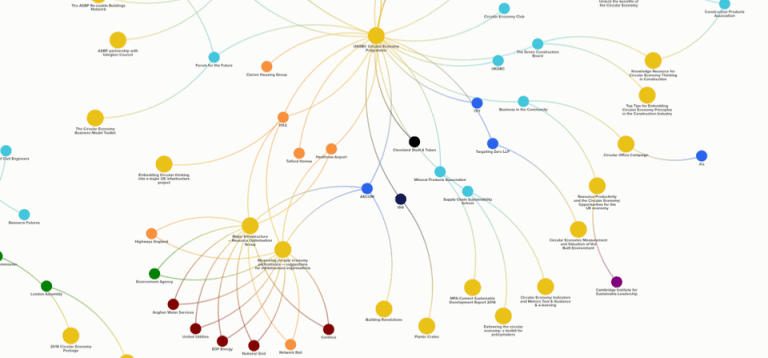System Enablers for a Circular Economy

Key Findings
Currently, our linear economy and focus on economic growth are maintaining levels of carbon emissions that are exceeding our planteray boundaries and our efforts to decouple the economy from these impacts have proven unsuccessful.
The transition to a circular economy will require a fundamental systems-level change in our cross-industry collaboration.
UKGBC has identified 8 industry enablers to provide ways to drive the shift toward a mindset of doing more good, considering the full life cycle of buildings and starting to do more to fully reflect the social, environmental and economic impacts.
A toolkit that examines the barriers to a circular economy, and presents eight key enablers to overcome them.
System Enablers for a Circular Economy highlights systemic barriers and the policy and market-based solutions to enable the built environment industry to shift from a linear to a circular system. It identifies eight enablers that will encourage the shift from our current linear economic system; building a foundation upon which a circular economy across the built environment can become the default way of operating as we transition to net zero.

- Greater collaboration and early engagement between industry stakeholders
- Establishing a marketplace for secondary construction materials
- Architecture practices characterised by circular economy design principles.
- Expanding the use of green contracts and leases
- Tax, legislation, and policy systems that direct industry and markets towards circularity.
- Scaling up green finance to stimulate business support for a circular economy.
- Enabling the industry to measure progress by having a set of consistent metrics, benchmarks and indicators.
- Educating practitioners and decision-makers with the necessary knowledge to be able to implement circular economy more widely.
The toolkit highlights how the transition to a circular economy will require a fundamental change in our economy. All levels of government, industry, and civil society will need to rally behind the common goal to shift from our current extractive and wasteful linear economy towards a regenerative, circular one. It also reveals that many of the solutions needed to deliver a circular economy available exist in today’s market and can be implemented immediately. For example, the greater use of circular economy design principles ensures a deconstructable and reusable approach to architecture that keeps construction materials in use.
Download the Report
System Enablers for a Circular Economy
Advancing Net Zero Partners
Our Advancing Net Zero work is made possible thanks to our programme partners









Circular Economy Project Partner
We’d like to thank the generous support of our circular economy project partner for making this project possible.

Related
Circular Economy Implementation Packs for Products as a Service and Reuse

How Circular Economy Principles can impact carbon and value

Circular economy actor and resource map

Circular economy guidance for construction clients: How to practically apply circular economy principles at the project brief stage

